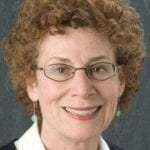HVO team treats cancer patients in Paraguay | Geraldine Jacobson, MD, MPH, MBA
“SGO is looking for a volunteer radiation oncologist to travel with Health Volunteers Overseas (HVO) to Paraguay”
I read this e-mail with my morning coffee and within hours had volunteered. I have been interested for several years in the challenges of providing radiation oncology services (capital and resource intensive) in middle- and low-resource countries, and considered this to be a unique opportunity.

Geraldine Jacobson, MD, MPH, MBA
My overriding impression of the visit is the graciousness and hospitality of our hosts. We were all met individually at the airport, and in my case, late at night. Each evening was a dinner or reception; on two evenings we were invited to our hosts’ homes. The national dish is asado, or wood-fired barbeque, served with yucca and chipa guasu, a local version of a corn cake. Future female volunteers take note: you should bring clothes for socializing in addition to work clothes.
 Our team consisted of Charles M. Balch, MD, FACS, a surgical oncologist; Linus T. Chuang, MD, a gynecologic oncologist, and myself, a radiation oncologist. The original HVO group had visited in October 2012 and, based on the site’s focus on breast and cervix cancer, decided the team composition. Dr. Duarte, a surgical oncologist at the NCI Paraguay, initiated the HVO mission. Throughout the visit our hosts demonstrated their commitment to improving cancer care for the people of Paraguay. They were active participants in all our activities and discussions.
Our team consisted of Charles M. Balch, MD, FACS, a surgical oncologist; Linus T. Chuang, MD, a gynecologic oncologist, and myself, a radiation oncologist. The original HVO group had visited in October 2012 and, based on the site’s focus on breast and cervix cancer, decided the team composition. Dr. Duarte, a surgical oncologist at the NCI Paraguay, initiated the HVO mission. Throughout the visit our hosts demonstrated their commitment to improving cancer care for the people of Paraguay. They were active participants in all our activities and discussions.
Our site was NCI Paraguay, the only cancer center in a country of 6 million people. It is a 200-bed hospital about 20 miles outside Asunción in Capiata, a location that is not convenient for the physicians or the patients. The most common cancer is cervical cancer followed by breast cancer. Patients are a decade younger than patients with similar cancer in North America and often present with advanced disease.
The number one priority determined at the first HVO visit was to improve access to care, develop treatment guidelines and improve timely treatment of cervix cancer patients. A weekly multidisciplinary clinic and tumor board was set up and a plan was put in place to collect patients’ demographics and treatment information and present the data during our visit. After touring the facility and meeting with our local colleagues, we participated in the weekly cervix cancer clinic and on our second day, attended the presentation of the cervix cancer demographics, stage, treatment and treatment delays, from the previous eight months. This was a landmark event, since this data has never been previously collected.
During our visit the President of Paraguay, Federico Franco, and the Minister of Health visited the cancer center and discussed their commitment to cancer care and announced the purchase of a new linear accelerator, new CT, and high dose rate brachytherapy system.
 The radiation oncology department has one single photon energy linear accelerator (LA), which treats 90 to 100 patients a day from 6 a.m. to 10 p.m. Low dose rate brachytherapy is done two to three days per week. There are delays in starting patients on treatment because of delays in imaging and work up as well as lack of access to the LA. The government has committed to purchasing an additional modern LA and has already purchased and installed a high dose rate brachytherapy delivery system. Staff training was started during my visit.
The radiation oncology department has one single photon energy linear accelerator (LA), which treats 90 to 100 patients a day from 6 a.m. to 10 p.m. Low dose rate brachytherapy is done two to three days per week. There are delays in starting patients on treatment because of delays in imaging and work up as well as lack of access to the LA. The government has committed to purchasing an additional modern LA and has already purchased and installed a high dose rate brachytherapy delivery system. Staff training was started during my visit.
Our third day was focused on breast cancer. We had a marathon tumor board with case presentations and interactive discussion combined with an assessment and recommendations for improving breast cancer care and reducing treatment delays.
A case was discussed concerning an 18-year-old female who presented with breast cancer and the challenges involved in her care. When the discussion ended the nurse went to the door and brought in a lovely young woman and introduced the patient we had been talking about: “And this is Daisy.” This brought home the personal aspect of cancer care, the impact our interventions can have on a life.